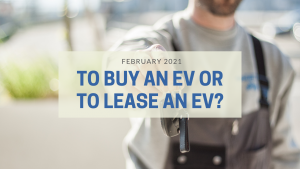This September, Consumer Reports featured its “Top Rated EVs”, reviewing 10 EV models across multiple popular brands, including Chevy, Kia, BMW and Tesla. Overall coming in with positive grades and showcasing a trend in continual innovation/ improvements to the driver’s experience, the Consumer Reports feature is yet another sign that the second rEVolution of electric vehicles is truly underway!
This is of course unsurprising considering how, not that long ago, electric vehicles were not only the industry favorite, but in many ways, the industry standard. Their reemergence into the spotlight accompanies a trend in rapid innovation, a hallmark of their nature since their introduction over 150 years ago. Want to know more? Let’s take a virtual time machine trip back through EV history!
Early Electric Vehicles
The exact year in which electric vehicles were ‘invented’ depends largely on what someone consider to be an electric vehicle. Some considers vehicles that were motorized but did not yet feature rechargeable batteries to be EVs, while others set more specific requirements. Regardless of which moment in time you feel officially started it all, one thing is certain: EV roots run deep.
Here are some Historical Highlights from the early days:
- In the 1830s (sometime between 1832-39) Scotland’s Robert Anderson built a motorized carriage, although its batteries were not yet rechargeable.
- In 1837, Robert Davidson, joined his Scottish peer in the electrification journey, building a prototype electric locomotive. A slightly modified version was properly introduced it to the public in 1841. Its batteries were replaceable, and it was capable of towing 6 tons for 1.5miles at 4mph.
- Leaps in battery innovation occurred throughout the next few decades, leading to an increased popularity in electrified vehicle innovation. Some notable advancements include:
>>> In 1881, French electric engineer and innovator Gustave Trouvé presented an electric car at the International Electrical Congress of Paris (Exposition internationale d’Électricité de Paris).
>>> In 1884, Englishman Thomas Parker built a practical production electric car using high-capacity rechargeable batteries of his own design. He would also go on to help deploy electrified trams in England.
>>> In 1888, German inventor Andreas Flocken introduced his Flocken Elektrowagen, which many today consider the first real electric car.
>>> From 1887-1890, Scottish-born chemist and resident of Des Moines, Iowa, William Morrison, built, presented in a city-wide parade and consequently applied for a patent on his electrified carriage. His carriage featured front-wheel drive, 4 horsepower, a reported top speed of 20mph and could go 50 miles before needing to be recharged. He presented it to the larger world in 1893 at the Chicago World’s Fair.
- In 1897, electrified commercial use taxis began to appear across Britain and the US, and electrified personal cars became more widespread. Quieter than their gasoline counterparts, and having no gear change requirements, by the turn of the 20th century, electric vehicle stock peaked at around 30,000 vehicles.
- In the 1910s-1920s, the industry found new methods of making gasoline-fueled ICE vehicles more readily available, e.g. replacing the hand-crank with an electric starter-motor, facilitating a shift in innovator’s focus. In the interest of saving money, the ICE vehicle became the favored manufacturer’s choice for many years- although electric vehicles never went away.
Modern Electric Vehicles
In more recent decades EV popularity has resurged, following the introduction of high-density, relatively affordable lithium-ion batteries. This innovation was just the first of many and is largely responsible for the modern rEVolution we see today.
- In the 1950s-1980s, the design of electric vehicles – and most importantly electric batteries- were revolutionized.
- In the early 1990s government bodies such as CARB (California Air Resources Board) began pushing for more fuel-efficient, lower-emissions vehicles, leading many automakers, including Chrysler, Ford, GM, Honda, Nissan and Toyota, to develop new electric models.
- In 2004, electric automaker Tesla Motors began development on the Tesla Roadster (2008), the car which would launch the company into the mainstream media spotlight as it became the first highway legal all-electric car to use lithium-ion battery cells, and the first production all-electric car to travel more than 200 miles per charge.
In the years since, electric vehicles have steadily regained the attention of the general public, emerging once again a preferred model of transportation. With fewer fueling and repair costs, greater re-fueling flexibility, and little to no (depending on the type of EV) unpleasant tailpipe emissions, it’s of little wonder why. Learn more about the ways EVs can save you time and money here!
Have more questions about EVs? Feel free to reach out to us at ev@ene.org





